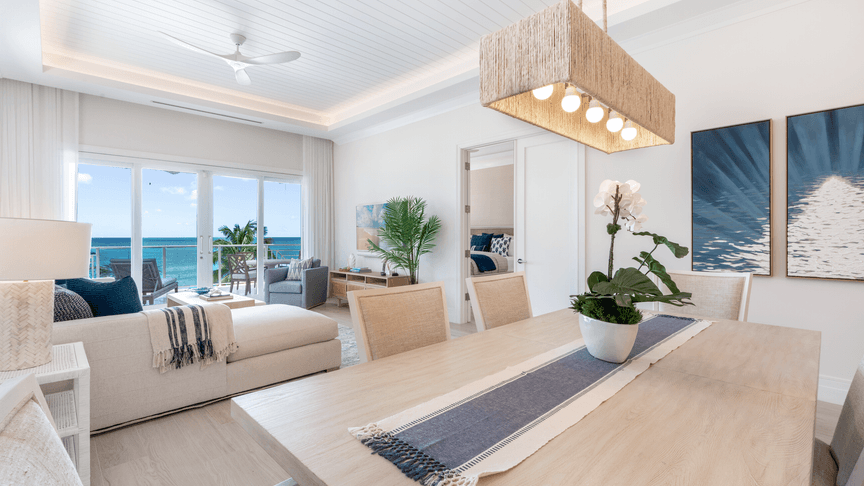

When improving a room, you need to think about the space as a whole. You may like a light fixture you saw on holiday, the blinds you saw in a magazine or be nostalgic for granny’s old side table, but you must ensure that whatever you do is harmonised with existing design elements in your home. It’s easy to forget about the bigger picture when embarking on a home-renovation project and that’s why we have outlined the following six points as important considerations before you begin.
Create Your Vision
Do your research and draw on many sources for inspiration. Use traditional interior design magazines and TV shows or websites, such as Pinterest and Houzz, which are home to thousands of interior design ideas, interior designers and tradespeople who will often showcase their portfolios. You can also create vision boards, which are great tools if you’re working with an interior designer, as they help you to understand each other’s vision. When improving a room, you need to think about the space as a whole rather than focusing on individual items you like. You may like a light fixture you saw on holiday, the blinds you saw in a magazine or be nostalgic for granny’s old side table, but you should ensure that whatever you do is harmonised with existing design elements in your home.
Have a Plan
A common mistake made by homeowners is to walk blindly into projects without doing some strategic thinking beforehand, particularly about how you plan to pay for the remodel, new furniture or fixtures. First and foremost, you must have an appropriate plan of action, which should include either a written scope of the proposed project or, for more complex projects, a set of drawings that include a detailed construction schedule, providing a clear visual representation of the works required and the estimated time and money needed to complete them.
Get it in Writing
Proceeding on home updates without having an adequate written agreement in place with your contractor or project manager leaves both the scope and the quality of the work open for interpretation by them and/or the subcontractor(s). This is a guaranteed recipe for disappointment and even disaster! In addition, all the participating parties need to have a clear and comprehensive understanding of precisely what is going to be involved. Decide what will add the most value for the dollars spent (as it is possible to cut costs without necessarily having to cut corners), determine what order the updates should take place in and, finally, assume the worst-case scenario for how much the final cost might turn out to be.
Manage Costs
The more detailed the information is about what you desire, the more accurate your cost projections will be. However, it is still important that you have a healthy margin of overage in place for any potential cost overruns or unexpected expenses. One easy way to keep your project in check is to banish the words ‘while you’re at it’ from your vocabulary during the project. It is an all-too-common mistake that can act as a slippery slope to budgetary woes. Stick to your original plan and avoid any unnecessary impulse additions!
Trends vs. Timelessness
As Cayman is a transient place, consider how long you plan on living in your current home. If it is five years or less, think about styles that will help increase your resale value rather than a personalised style that may put buyers off. Or simply go for cosmetic enhancements rather than large structural projects. If it is 10 years or more, consider adopting a classic style or design that won’t date. You should also always think about long-term personal changes, such as whether you’ll be having children and how that fits with your design aesthetic. Older houses and condominiums in Cayman reflect the various architectural and interior design styles that were popular at the time of construction. Design styles have evolved dramatically through the years and today’s homeowner wants a chic, elegant, open house plan full of natural light and space.
Remodelling a dated residence can easily bring that vision to life. Finding ways to assess a renovation and maximise the property’s true potential via creative and affordable options is where the value of the right contractor’s knowledge and experience can really come into play. Separate and distinct rooms continue to be replaced by open-concept rooms, combining kitchens and family rooms as a shared social space with plenty of room to do everything from homework to entertaining. Simplification of design by way of cleaner lines and more natural and timeless elements, such as wood and stone, as well as the modern reflective elements of steel and glass, have also become popular incorporations into the contemporary remodelling scheme.
Be Green
Green living has made its way firmly into home construction as consumers continue to become more aware of the long-term savings and other positive implications associated with an energy-efficient approach. Logical additions to current green Caribbean design and retrofit remodelling schemes incorporate energy-efficient low emittance windows, smart glass (also known as electrochromic glass), cool roofs that reflect the sunlight away, solar energy generation, LED lighting, rainwater harvesting tanks and cisterns, greywater systems, tankless water heaters, permeable pavers, drought-tolerant and native plants, no or low-mow grasses and use of reclaimed wood for remodelling and new building. Read our section on Building Green to learn more.
